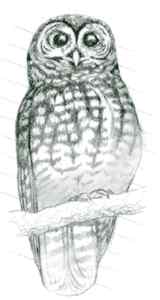Acknowledgments
 I
need to thank a lot of U.S. Forest Service and National Park Service employees
who stopped in the middle of their busiest seasons and helped me understand
more than 11.5 million acres of public land I encountered in writing this
book. These people often stayed after work or talked with me on the telephone
from their homes; they went above and beyond.
I
need to thank a lot of U.S. Forest Service and National Park Service employees
who stopped in the middle of their busiest seasons and helped me understand
more than 11.5 million acres of public land I encountered in writing this
book. These people often stayed after work or talked with me on the telephone
from their homes; they went above and beyond.
The thanks should start with Matt Mathes, the regional public information
officer for the Forest Service. He opened the agency’s library to me.
Lisa DeHart in the Stanislaus National Forest helped me understand the history
in the Central Sierra. Ann Westling of the Tahoe National Forest, Renota
Rich of the Sierra National Forest, and Jannette Cutts of the Inyo National
Forest provided me with a lot of information about their parts of the mountain
range.
Many folks read my drafts and straightened out my misguided passages. Without
them, my shortcomings would have been far more noticeable. The list begins
with Kris Fister at Sequoia-Kings Canyon National Park, who helped with
words and photographs. Nancy Bailey at Lassen Volcanic National Park gave
me her guidance and photographs of her Northern California park. Readers
from the Forest Service providing their expertise were Sue Exline, Don Lane,
Jeanette Ling, Pat Kaunert, Lee Anne Schramel Taylor, and Frank Mosbacher.
From the federal Bureau of Land Management, Al Franklin contributed informed
guidance. Steve Medley from the Yosemite Association helped make the Yosemite
National Park section more accurate.
Thanks also to author-historian Gene Rose, whose many books, deep Sierra
background, and friendship have been an inspiration for me. He read and
critiqued two large portions on the Eastern Sierra and the Southern Sierra.
Others may have been unaware of how valuable they are as sources of information
and guidance. Among them are author-naturalist Bill Tweed and biologist
David Graber, both of Sequoia-Kings Canyon National Parks; ecologist and
California spotted owl expert Jared Verner; Yosemite public information
officer Scott Gediman; Sierra Foothills Conservancy advocate Chuck Peck;
and Richard Kunstman of the Yosemite area Audubon Association has long been
a valued source of information. Conversations and time spent with each of
them have added such depth to my understanding of the Sierra.
 The
Pacific Crest Trail Association was helpful in steering me to author-geologist
Jeffrey Schaffer, whose prolific work and insights were an inspiration.
A debt is also owed to Jeffrey Mount, geologist and professor at the University
of California, Davis, whose study of California rivers has proven so valuable
in this and other writing I have done. Jay Watson, regional director of
the Wilderness Society, also helped me sort out many complex issues.
The
Pacific Crest Trail Association was helpful in steering me to author-geologist
Jeffrey Schaffer, whose prolific work and insights were an inspiration.
A debt is also owed to Jeffrey Mount, geologist and professor at the University
of California, Davis, whose study of California rivers has proven so valuable
in this and other writing I have done. Jay Watson, regional director of
the Wilderness Society, also helped me sort out many complex issues.
Thanks to Jay’s wife, Kathleen Watson, for her lovely photographs of
Lake Tahoe and the Central Sierra. Many thanks to editors Pam Holliday and
Richard Lenz at Lenz Design and Communications for their tireless pursuit
of proper English, accurate detail, and clearer writing. This book is so
much better because of their work.
Finally, I must thank my wife, Sue. Without her patience, support, hard
work, and encouragement, I could not have written this. My love and hope
are always with her and our three children, Kristin, Joseph, and Nicholas,
as well as my parents, Rocky and Lee Grossi.
—Mark Grossi
Read
and add comments about this page
Reader-Contributed Links to the California Sierra Nevada Book:
 I
need to thank a lot of U.S. Forest Service and National Park Service employees
who stopped in the middle of their busiest seasons and helped me understand
more than 11.5 million acres of public land I encountered in writing this
book. These people often stayed after work or talked with me on the telephone
from their homes; they went above and beyond.
I
need to thank a lot of U.S. Forest Service and National Park Service employees
who stopped in the middle of their busiest seasons and helped me understand
more than 11.5 million acres of public land I encountered in writing this
book. These people often stayed after work or talked with me on the telephone
from their homes; they went above and beyond.
 The
Pacific Crest Trail Association was helpful in steering me to author-geologist
Jeffrey Schaffer, whose prolific work and insights were an inspiration.
A debt is also owed to Jeffrey Mount, geologist and professor at the University
of California, Davis, whose study of California rivers has proven so valuable
in this and other writing I have done. Jay Watson, regional director of
the Wilderness Society, also helped me sort out many complex issues.
The
Pacific Crest Trail Association was helpful in steering me to author-geologist
Jeffrey Schaffer, whose prolific work and insights were an inspiration.
A debt is also owed to Jeffrey Mount, geologist and professor at the University
of California, Davis, whose study of California rivers has proven so valuable
in this and other writing I have done. Jay Watson, regional director of
the Wilderness Society, also helped me sort out many complex issues.